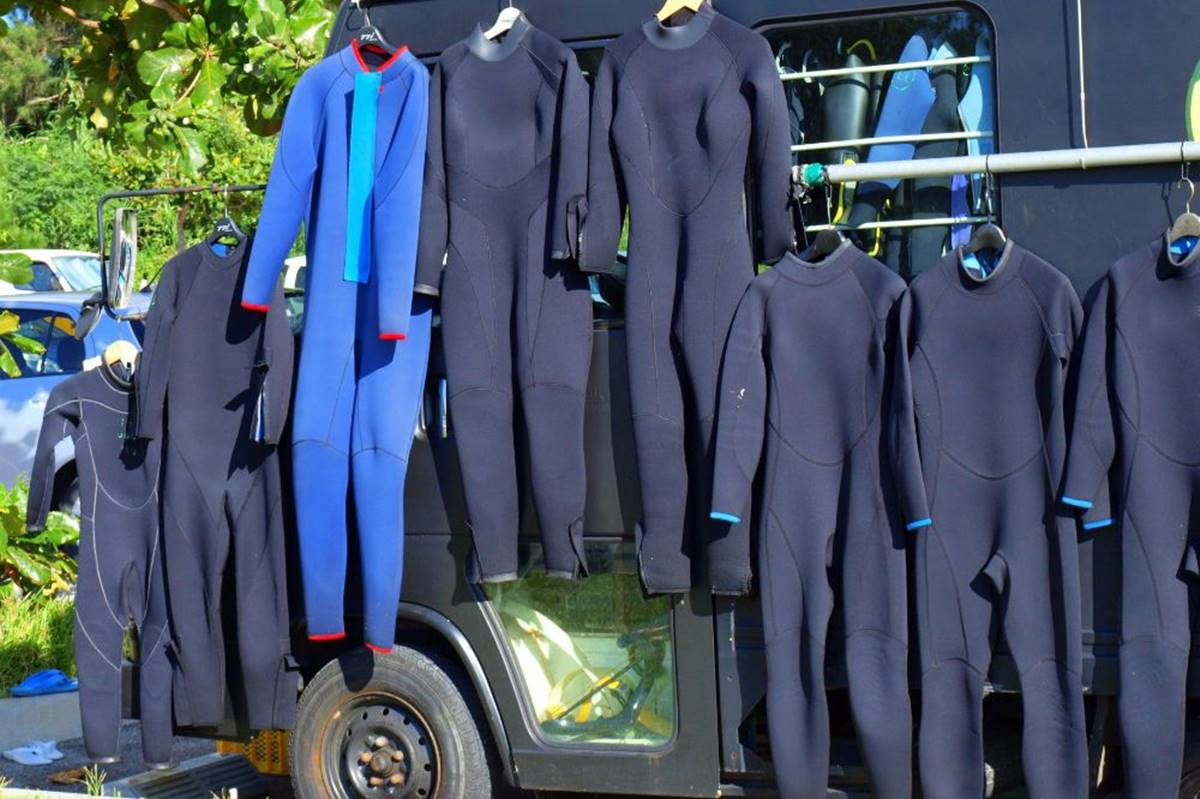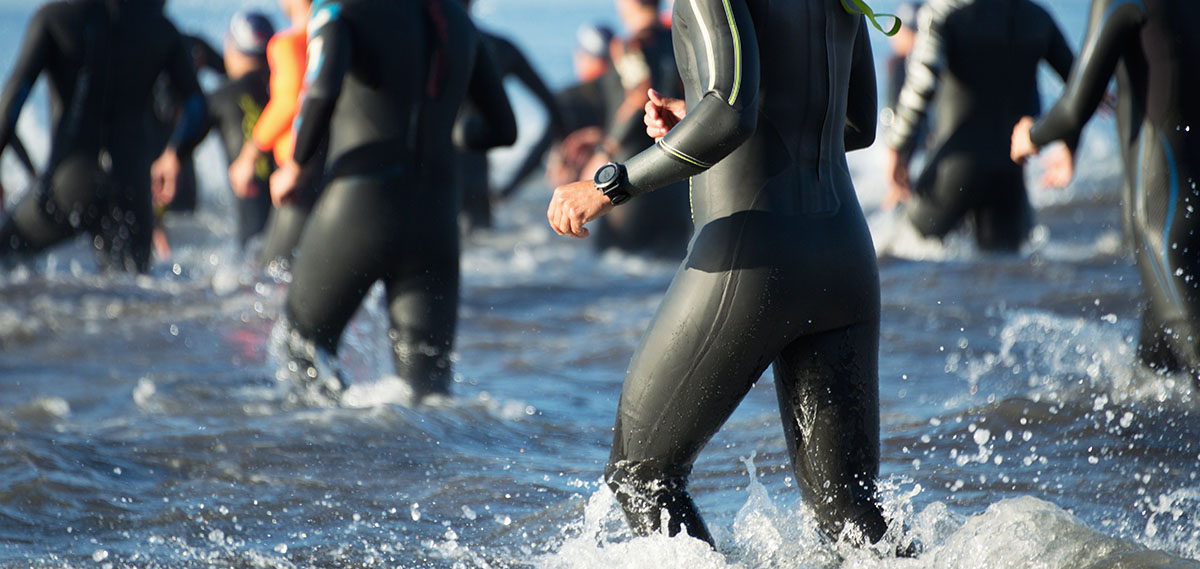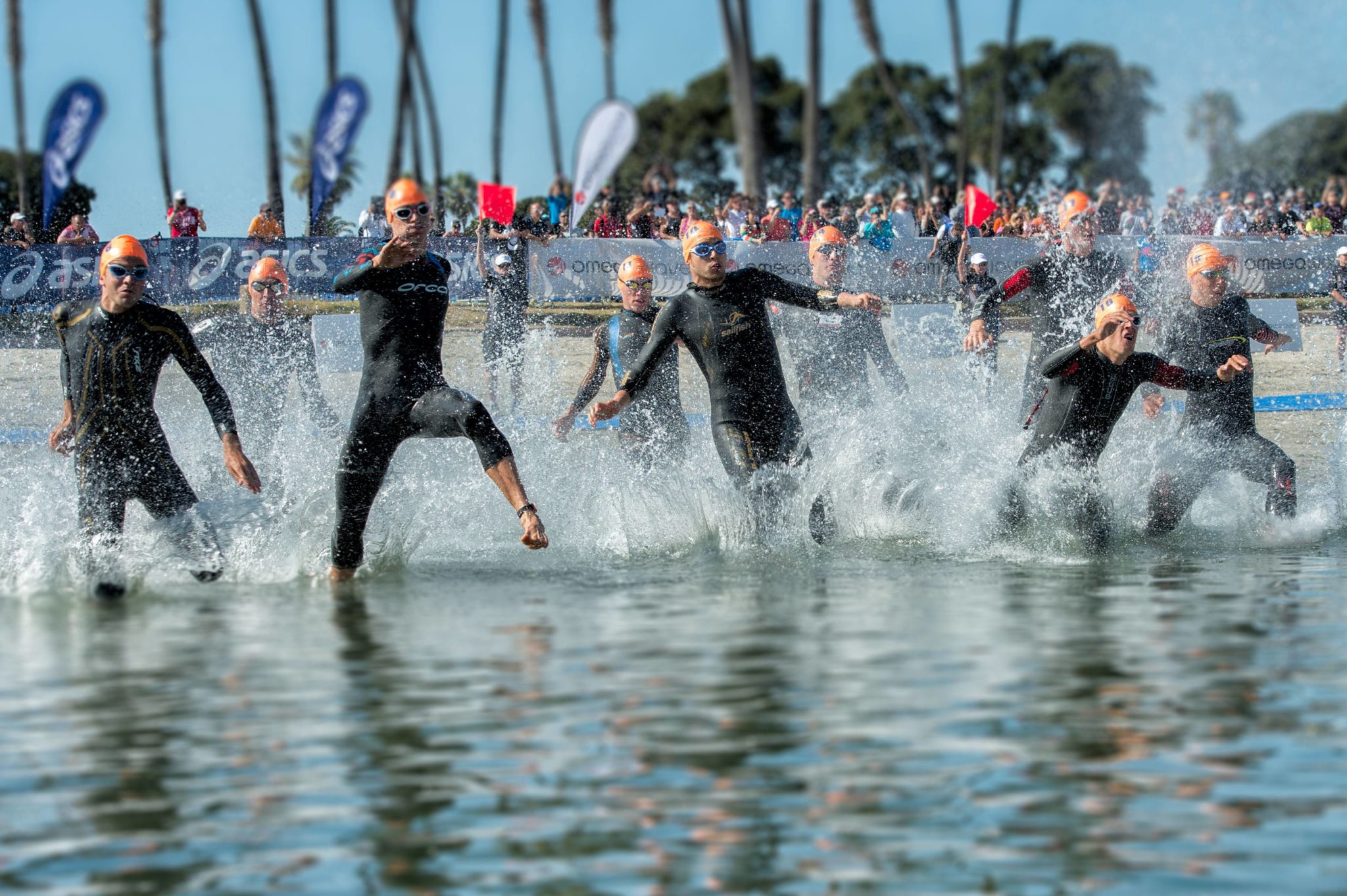

Featured
How To Clean A Wetsuit After A Triathlon
Modified: October 3, 2023
Learn the best way to clean your wetsuit for triathlons in this featured guide. Keep your gear fresh and extend its lifespan with our expert tips.
Introduction
When it comes to triathlons, having a well-maintained wetsuit is essential for peak performance. A clean wetsuit not only improves your performance in the water but also extends the life of your gear. Regularly cleaning your wetsuit removes salt, sand, sweat, and bacteria, ensuring optimal comfort and hygiene during training and races.
In this article, we will guide you through the process of cleaning a wetsuit step by step. From rinsing off excess dirt to drying and maintaining it, we will cover all the necessary aspects to keep your wetsuit in top condition.
Before we dive into the cleaning process, here are some materials you will need:
- Bucket or tub
- Wetsuit-specific cleaner or mild detergent
- Soft sponge or brush
- Water source
- Hangers or wetsuit drying rack
Now that you have your materials ready, let’s get started with the first step: rinsing the wetsuit.
Materials Needed
Before you begin the process of cleaning your wetsuit, it’s important to gather all the necessary materials. Here’s a list of what you’ll need:
- Bucket or Tub: You’ll need a container large enough to fit your wetsuit and allow it to soak.
- Wetsuit-specific Cleaner or Mild Detergent: Using a cleaner specifically designed for wetsuits ensures that it effectively removes dirt, grime, and odors without damaging the material. If you don’t have a wetsuit cleaner, you can use a mild detergent.
- Soft Sponge or Brush: A soft sponge or brush will help you gently scrub the wetsuit without causing any damage or abrasion.
- Water Source: You’ll need access to a water source, such as a hose or sink, to rinse the wetsuit thoroughly.
- Hangers or Wetsuit Drying Rack: After cleaning, you’ll need a way to hang up your wetsuit for drying. Using hangers specifically designed for wetsuits or a wetsuit drying rack will help maintain the shape of the suit.
Having these materials on hand will make the cleaning process much easier and ensure that you can properly care for your wetsuit. Now that you’re prepared, let’s move on to the next step: rinsing the wetsuit.
Step 1: Rinsing the Wetsuit
The first step in cleaning your wetsuit is to thoroughly rinse off any excess dirt, salt, sand, or debris. This helps to prevent these particles from embedding themselves deeper into the neoprene and causing damage over time.
Here’s how you can rinse your wetsuit:
- Fill a bucket or tub with clean, lukewarm water.
- Place your wetsuit in the water and gently agitate it to remove any loose dirt or debris. You can also stretch and flex the neoprene to release any trapped particles.
- Allow the wetsuit to soak in the water for a few minutes, ensuring that all parts of the suit are submerged.
- Next, rinse the wetsuit thoroughly with fresh water. You can use a hose or a sink faucet with a gentle stream of water to remove any remaining dirt or residue.
- Make sure to rinse both the exterior and interior of the wetsuit, paying close attention to areas such as the cuffs, collar, and seams where dirt tends to accumulate.
It’s important to use lukewarm water for rinsing, as hot water can damage the neoprene and cold water may not effectively remove dirt and bacteria. Additionally, avoid using any harsh chemicals or bleach during this step, as they can degrade the quality of the wetsuit.
Once you have thoroughly rinsed your wetsuit, you’re ready to move on to the next step: cleaning the exterior.
Step 2: Cleaning the Exterior
After you have rinsed your wetsuit, it’s time to clean the exterior to remove any stubborn stains, dirt, or grime. Cleaning the exterior of your wetsuit not only improves its appearance but also helps maintain its functionality and longevity.
Here’s a step-by-step guide on how to clean the exterior of your wetsuit:
- Apply a wetsuit-specific cleaner or mild detergent to a soft sponge or brush.
- Gently scrub the exterior of the wetsuit in a circular motion, focusing on areas that are particularly dirty or stained.
- Take care not to scrub too vigorously, as this can damage the neoprene. Instead, use light pressure and let the cleaner do the work.
- Pay special attention to areas where dirt tends to accumulate, such as the knees, elbows, and underarms.
- Rinse the wetsuit thoroughly with fresh water to remove any residues from the cleaner or detergent.
- If there are any persistent stains or odors, you can repeat the cleaning process or use a wetsuit-specific stain remover.
Remember to always follow the manufacturer’s instructions when using any cleaning products on your wetsuit. Avoid using harsh chemicals, bleach, or abrasive cleaners, as they can damage the neoprene and affect the wetsuit’s performance.
Once you have cleaned the exterior of your wetsuit, it’s time to move on to the next step: cleaning the interior.
Step 3: Cleaning the Interior
While cleaning the exterior of your wetsuit is essential, it’s equally important to clean the interior. The interior of your wetsuit can harbor bacteria, sweat, and body oils, which can cause unpleasant odors and potentially lead to skin irritation.
Here’s a step-by-step guide on how to clean the interior of your wetsuit:
- Turn the wetsuit inside out, exposing the interior.
- Apply a wetsuit-specific cleaner or mild detergent to a soft sponge or brush.
- Gently scrub the interior of the wetsuit, paying close attention to areas that come into direct contact with your body, such as the underarms, chest, and crotch.
- Take care not to scrub too aggressively, as this can damage the neoprene. Instead, use gentle circular motions to clean the interior surface.
- Rinse the wetsuit thoroughly with fresh water to remove any residues from the cleaner or detergent.
- If there are any persistent odors, you can add a small amount of wetsuit-specific odor eliminator to the rinse water.
After cleaning the interior, make sure to rinse the wetsuit thoroughly to ensure that no traces of cleaner or detergent remain. Any leftover residue can irritate your skin when you wear the wetsuit during your triathlon.
Once you have completed cleaning the interior of your wetsuit, it’s time to move on to the next step: drying the wetsuit.
Step 4: Drying the Wetsuit
Properly drying your wetsuit is crucial to prevent mold, mildew, and unpleasant odors. It’s important to ensure that your wetsuit is completely dry before storing it to maintain its quality and prolong its lifespan.
Here’s a step-by-step guide on how to dry your wetsuit:
- Gently squeeze out excess water from the wetsuit without wringing or twisting it. Avoid applying excessive force, as this can damage the neoprene.
- Choose a well-ventilated area with no direct sunlight to hang your wetsuit. Direct sunlight can cause the neoprene to deteriorate over time.
- Use hangers specifically designed for wetsuits to hang your wetsuit. Alternatively, you can use a wetsuit drying rack to support the suit and maintain its shape.
- Hang your wetsuit by the shoulders to ensure proper air circulation. Avoid hanging it by the waist, as this can cause stretching and distortion.
- Allow your wetsuit to air dry completely. Depending on the climate and humidity, it may take anywhere from a few hours to a day or more for the wetsuit to dry fully.
- Ensure that both the exterior and interior of the wetsuit are completely dry before storing it. Check the cuffs, collar, and any folds or creases to make sure there is no residual moisture.
It’s crucial not to put your wetsuit in a dryer or expose it to direct heat sources such as radiators or hairdryers. Excessive heat can damage the neoprene and cause the wetsuit to shrink or lose elasticity.
By following these drying guidelines, you’ll ensure that your wetsuit remains in optimal condition for your next triathlon. Now that your wetsuit is clean and dry, let’s move on to the final step: maintaining the wetsuit.
Step 5: Maintaining the Wetsuit
Proper maintenance is key to prolonging the life of your wetsuit and keeping it in optimal condition. By following these maintenance tips, you can ensure that your wetsuit continues to provide comfort and performance for many triathlons to come.
Here are some essential tips for maintaining your wetsuit:
- Store it properly: After your wetsuit is completely dry, store it in a cool, dry place away from direct sunlight. Avoid folding or creasing the neoprene excessively, as this can cause permanent creases and damage.
- Avoid sharp objects: Be mindful of sharp objects or surfaces that can puncture or tear your wetsuit. Avoid sitting or kneeling on rough surfaces, and be cautious when putting on or removing the suit.
- Inspect for damage: Regularly inspect your wetsuit for any signs of wear, such as tears, loose seams, or broken zippers. Promptly repair any damage to prevent it from worsening during your next swim.
- Limit exposure to chlorine: Chlorine can deteriorate the neoprene material over time. If you frequently swim in chlorinated pools, consider wearing a separate chlorine-resistant swimwear layer on top of your wetsuit.
- Follow manufacturer guidelines: Always refer to the manufacturer’s instructions for specific care guidelines for your wetsuit. Different brands and models may have slightly different care requirements.
- Regularly clean and rinse: Make it a habit to clean and rinse your wetsuit after each use, especially if you’ve been swimming in saltwater or murky conditions. This will prevent the buildup of salt, sand, and bacteria.
Following these maintenance practices will help extend the lifespan of your wetsuit and ensure that it continues to perform optimally for your future triathlons.
With these steps and tips, you now have the knowledge to effectively clean and maintain your wetsuit. By taking the time to properly care for your gear, you can maximize its longevity and enjoy the benefits of a clean and well-maintained wetsuit in your triathlon pursuits.
Conclusion
Cleaning and maintaining your wetsuit is of utmost importance in the world of triathlons. By following the step-by-step process outlined in this article, you can ensure that your wetsuit remains clean, fresh, and in optimal condition for your training sessions and races.
Remember to always use the necessary materials, such as a wetsuit-specific cleaner or mild detergent, a soft sponge or brush, and clean water, to effectively clean your wetsuit. Additionally, make sure to rinse both the exterior and interior thoroughly to remove any dirt, salt, or bacteria.
After the cleaning process, it’s vital to dry your wetsuit properly. Hanging it in a well-ventilated area away from direct sunlight and ensuring that it is completely dry before storing will prevent mold, mildew, and unwanted odors.
Maintaining your wetsuit is also key to extending its lifespan. Store it properly, avoid sharp objects that can damage the neoprene, and regularly inspect for any signs of wear or damage that may require prompt repairs.
By incorporating these cleaning and maintenance practices into your routine, you can enjoy the benefits of a clean, well-maintained wetsuit that enhances your performance and comfort during triathlons. Take care of your gear, and it will take care of you on your journey to triathlon success!









